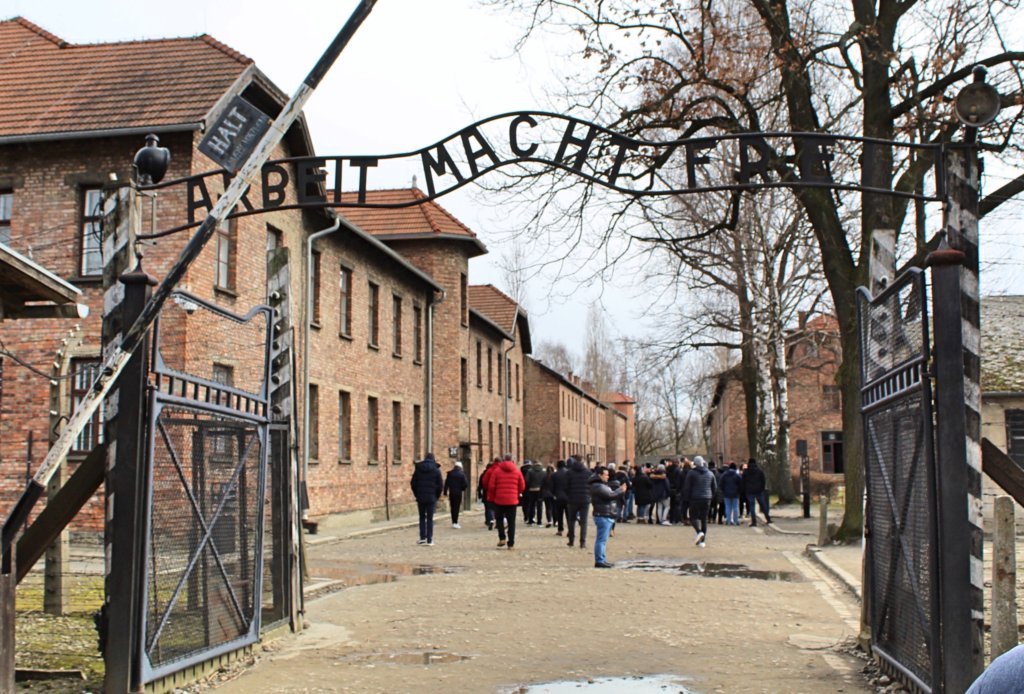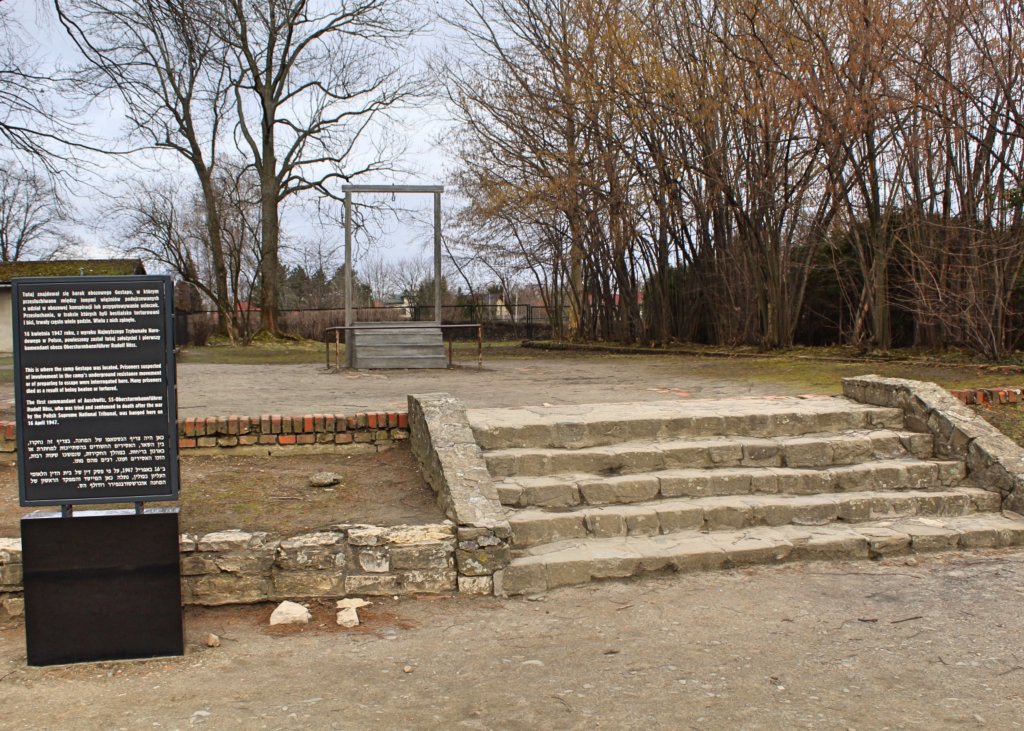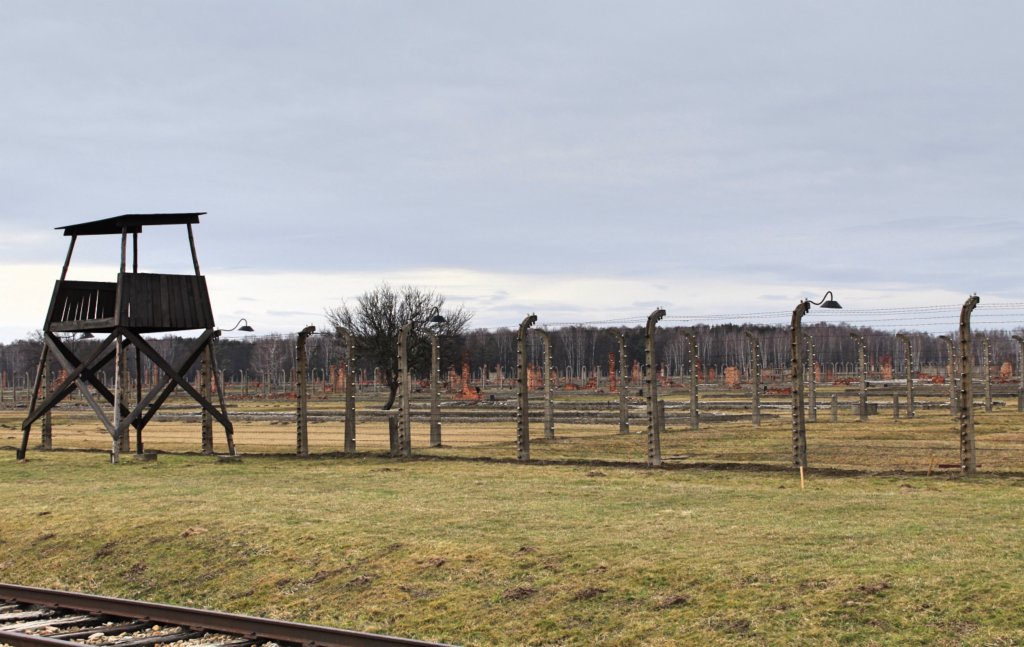The plane—Ryanair, unfortunately—landed well after dark. My brother and I quickly extracted some złoty from an ATM and then got into a taxi. The driver was a friend of our Airbnb host. Quite polite and charming, he asked us about where we were from, and a halting conversation began.
“Man, it’s really cold,” I observed, lamely, during a lull.
“Yes,” he said in his thick accent. “In Poland, we have winter.”
Indeed, he was right: it was winter. In fact, this was the last weekend of February 2020, right before the pandemic turned the world on its head. Though I was blissfully unaware of it at the time, this trip would prove to be my last gasp of “normalcy”—and, at least until now, my final European trip outside of Spain. But at the time, I only noticed that it was awfully cold compared to Madrid.
We had left for Poland as soon as we had gotten out of work. As a result, by the time we made it into our room, it was past midnight, and we only had the energy to crawl into bed and pass out.
The next day we awoke, dazed and still a little cold, ready to explore Krakow.
But first, breakfast. For this, we stopped by a food stand and got some obwarzanki krakowskie, the so-called Krakow bagel. Unlike the bagels I am used to, this version is thinner, saltier, and crunchier—almost like a cross between a bagel and a soft pretzel. Very tasty and affordable. After this wholesome repast, we wandered toward Krakow’s old center.
Like many cities in Europe, Krakow has a history that stretches back to medieval times, and beyond. And like many beautiful cities, a certain set of circumstances conspired to build up and preserve the place. The first necessary step is to enjoy a golden age of artistic creation—either through commerce, or by being the seat of political power, or preferably both—and it just so happens that Poland’s so-called golden age occurred when Krakow was the capital of the country. Then, importantly, political power shifted elsewhere (to Warsaw), leaving many impressive buildings to weather the centuries, bereft of their original importance. Finally, and crucially, Krakow was lucky enough to survive the desolation of modern warfare. While Warsaw was blown to smithereens, Krakow remained relatively unscathed during the Second World War. Thus it is that the city has the look and charm of a medieval capital.
The first thing to catch our eyes was the Grunwald Monument. This is an enormous equestrian statue of the Polish king Władysław II Jagiełło (don’t ask me to pronounce it), who forged an alliance with Lithuania and defeated the Teutons (Germans) in the battle of Grunwald. This epochal battle, which took place in 1410, is said to mark the beginning of Poland’s golden age; and the monument was erected 500 years later, in 1910, to commemorate this symbol of Polish pride. Unsurprisingly, when the Nazis invaded, they could not abide the sight of a monument to a German defeat; so they did what Nazis do, and destroyed it. The monument was rebuilt in 1976—and may it be forever a symbol of Poles triumphing over Germans.
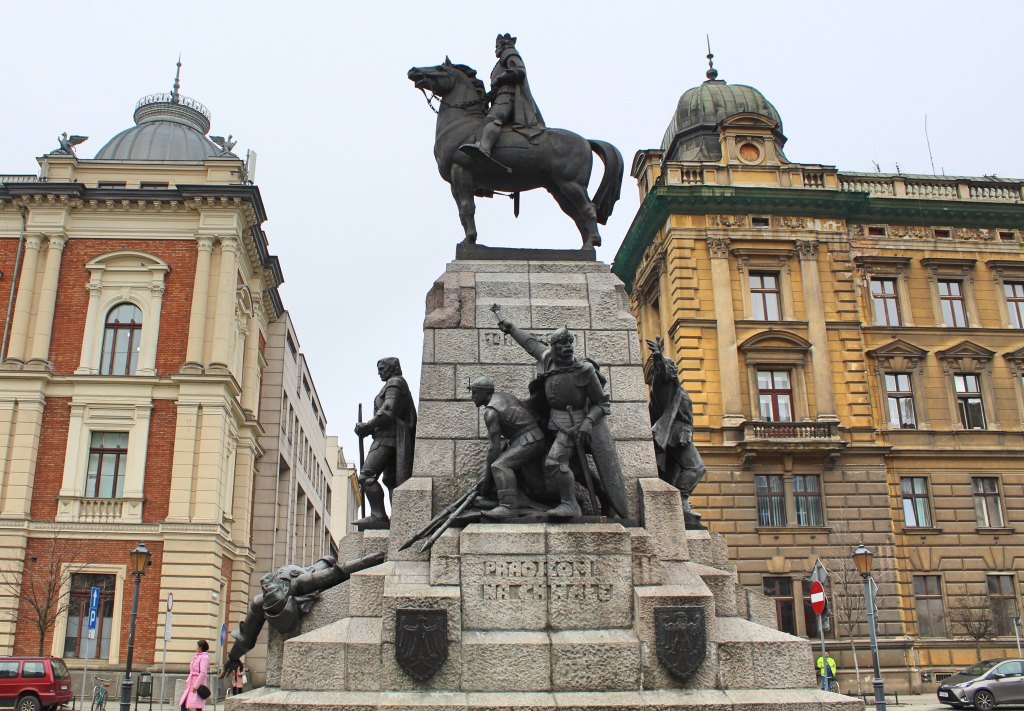
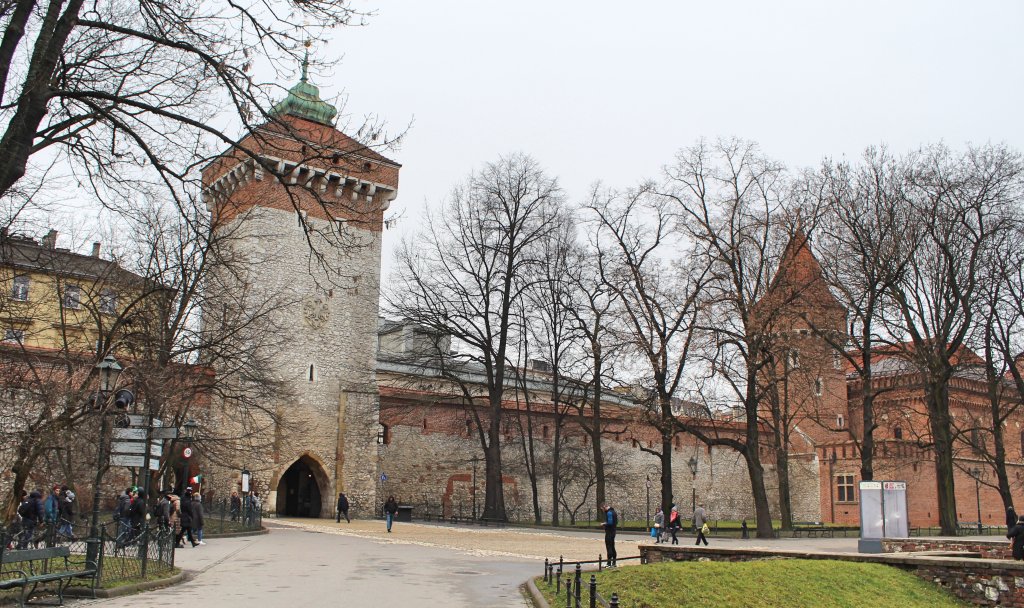
Nearby is the barbican. This is a kind of fortress that once formed an important part of the city’s defenses. Though we did not go inside, a single glance was enough to reveal an imposing and, in a way, a beautiful structure—with gothic spires jutting out over the solid brick walls. I would hate to have been the poor soldier tasked with capturing it. The original medieval walls are also preserved nearby, which encircle the old center of Krakow. We proceeded through the gate, and down a long avenue—Floriańska Street—filled with touristy shops and American fast food, until we reached the Rynek Główny, which is just Polish for “Main Square.” It is a grand, open space, filled with pigeons, tourists, and stately buildings.
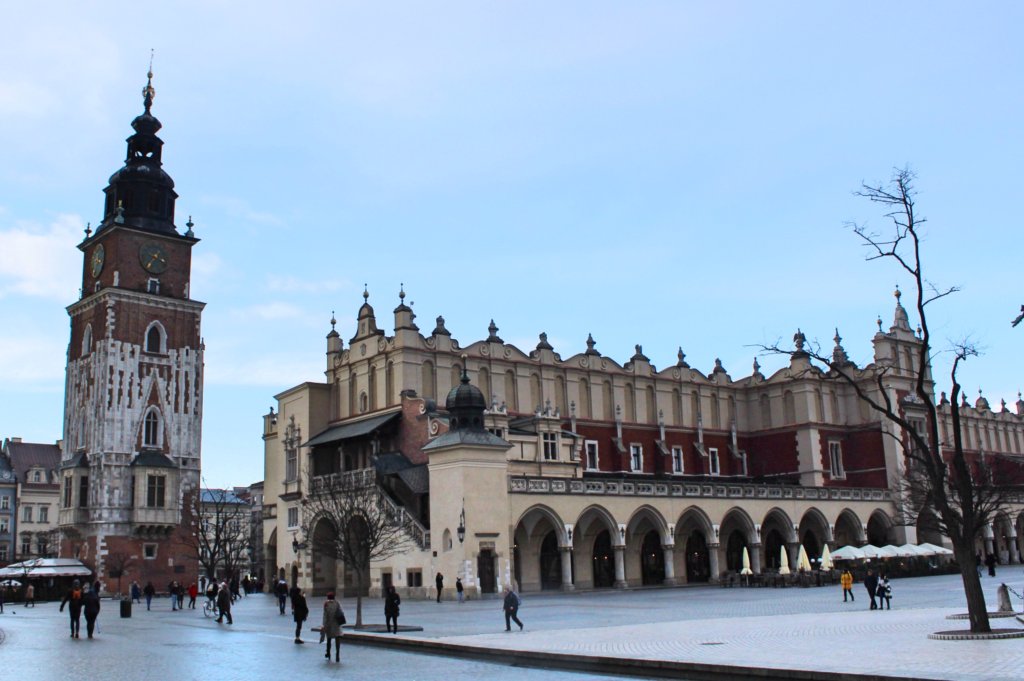
Prominent among these is the Town Hall Tower, a gothic clock tower that—as its name suggests—once formed a part of the town hall. For better or worse, the rest of the town hall was demolished in 1820 in order to open up the Main Square. Much more modest in stature is the Church of St. Adalbert, a relatively small church with modest decorations inside. Yet it is distinguished for being one of the oldest stone churches in the country, having been built in the 11th century. Nearby is the Adam Mickiewicz Monument, a large sculptural assembly that may be the best place to meet somebody if you want an easy-to-find landmark. Adam Mickiewicz, by the way, can perhaps be considered the national bard of Poland. (One day, I hope to read his epic poem, Pan Tadeusz.) Right in the center of the square is Cloth Hall, a lovely Renaissance building that once served as a kind of medieval stock exchange, though for spices and fabrics instead of stocks and bonds. Nowadays it is a touristy market.

Yet the loveliest building of the bunch, for me, is St. Mary’s Basilica. Like the cathedral at Chartres, this basilica has two unmatching towers, which rise splendidly over the main square. The interior is even more impressive than the relatively unadorned façade. Pride of place undoubtedly belongs to the magnificent wooden altarpiece, carved by one Veit Stross. As you may have guessed from his name, Stross was a German; yet his masterpiece has—ironically, perhaps—become an icon of the Polish identity. Even more ironically, this artistic treasure was stolen by the Nazis, only to be found in the basement of the Nuremberg Castle (a city, as it happens, where Stross also lived and worked). Passing over the other lovely works of art in the basilica—most notably, Jan Matejko’s murals—I must mention the hejnał mariacki, a bugle call played every hour, twenty-four hours a day, from the taller tower. It is a beautiful melody that ends awkwardly and abruptly, in honor of a bugler who was, supposedly, shot in the throat by an arrow during an attack by the Mongols, in the 13th century.
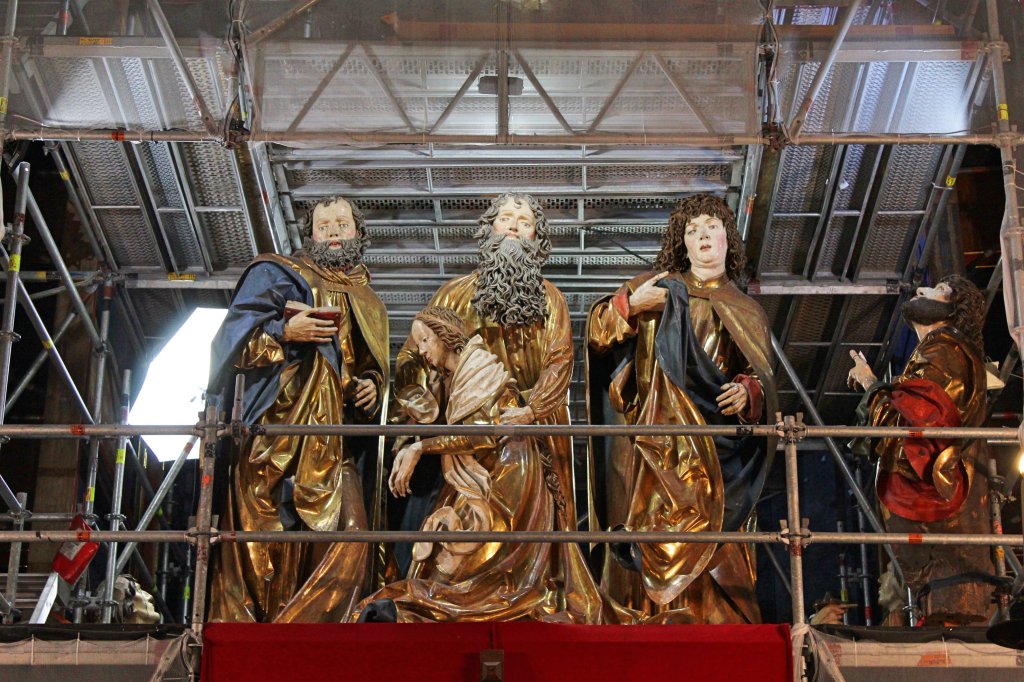

Next we made our way to another edge of the old town, to a hill overlooking the river Vistula. This is Wawel, a large building complex that includes a castle and a cathedral. It is an architecturally jumbled place, with buildings from every major stage of Poland’s history. One highlight is the arcades in the Italian Renaissance-style courtyard, constructed under the reign of Sigismund the Old (1506 – 1548). This old Sigismund, along with the younger one, are buried in a resplendent chapel in the cathedral. Yet old as he was, Sigismund was not the first king to be buried in this august place, that distinction belonging to Władysław I the Elbow-high, so called because of his short stature. This cathedral, as it happens, also has two unmatching towers; and while not as beautiful as St. Mary’s, Wawel Cathedral makes up for it with its many royal bodies.
Leaving the old town now, we visited the nearby neighborhood of Kazimierz. This part of town is now most famous—partly thanks to the movie Schindler’s List, which was filmed here—for its Jewish culture. But Kazimierz was never exclusively Jewish, as you can see from the many churches, such as the impressively pointy Corpus Christi Basilica.
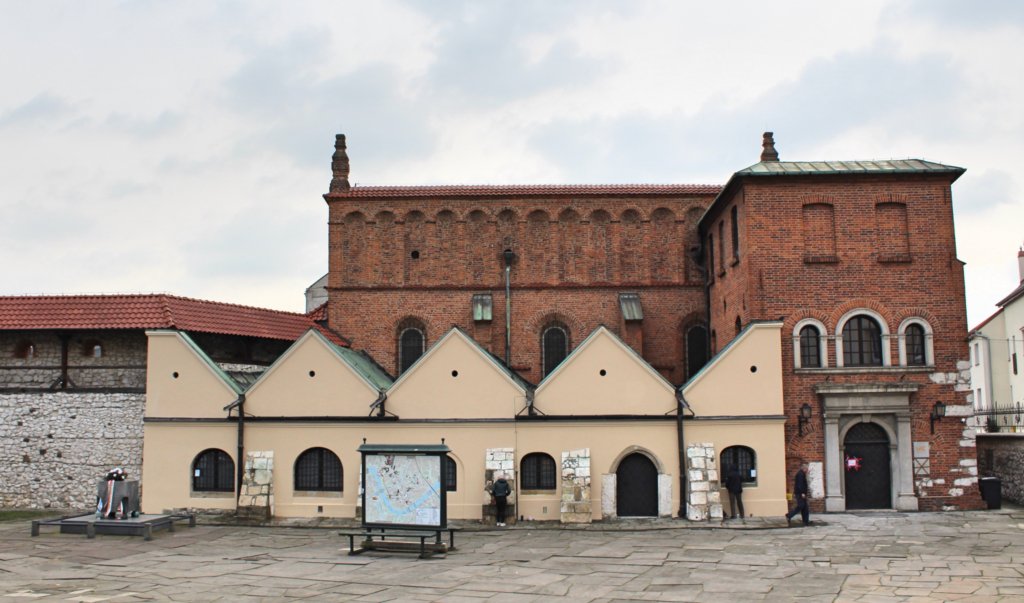
Though this part of the city was looted and destroyed by the Nazis, and then further devasted by the Red Army, many examples of Jewish culture survive. Foremost among these is the Old Synagogue, which is part temple and part fortress, with thick walls built to protect those inside. Constructed in the 15th century, it is the oldest synagogue in the country. Aside from the many synagogues and Jewish restaurants, there are also many reminders of the oppression suffered by this community under the Nazis. A plaque affixed to a stone invites onlookers to meditate on the tens of thousands of Jews from Krakow killed during the Second World War. A short walk across the Vistula brings you to another monument, this one consisting of empty metal chairs, which commemorates the former Jewish ghetto (the Nazis forced the Jewish population to leave Kazimierz and live in this ghetto, where conditions were so bad that most did not survive).
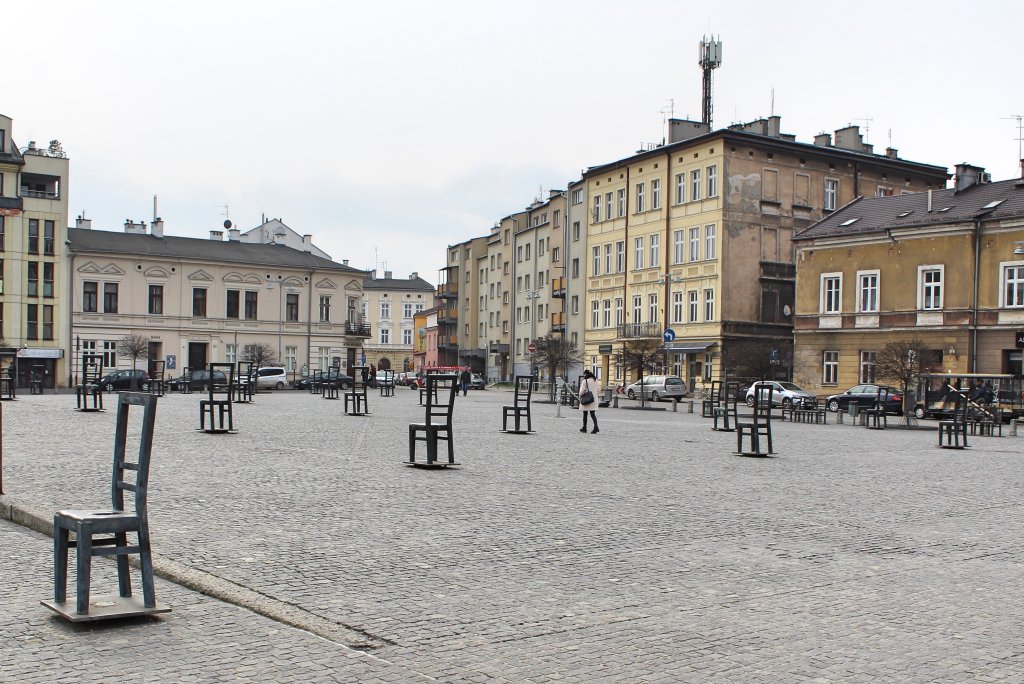
Nearby is the famous factory of Oskar Schindler. If you have seen the movie (I actually haven’t, come to think of it), you know the story: Schindler, a member of the Nazi Party, dedicated enormous resources and energy in order to keep the Jewish workers of his factory safe, thus saving the lives of over 1,000 Jews. The factory is now part memorial, part museum. You can see Schindler’s old desk, examples of the enamelware they produced, as well as exhibits on the history of Krakow—including a good deal of information about World War II and the Holocaust. It is an ideal place to learn about some of the more recent history of the city.
To learn about some more distant history, the place to go is the Rynek Underground. As its name suggests, this is a subterranean museum, to be found below the Main Square (it took us a few minutes to locate the entrance). This museum is situated in an archeological site, where the remains of the medieval city are still visible. Rather than just letting the old bricks and rocks do the talking, however, the curators opted for holograms, wherein daily scenes of medieval life (recreated by actors) are projected onto the scene. I am not sure that it was particularly educational, but it was interesting. My favorite part of the museum, ironically, was near the end of the visit, where a documentary of the history of Krakow is simply played on repeat. It was quite well-made, I thought, and taught me more than the actual exhibits had.
This fairly well did it for our time in Krakow. Yet the Rynek Underground did not prove to be the most interesting thing we saw below the earth that trip.
Wieliczka Salt Mines
The train from Krakow dropped us in the town of Wieliczka in a little under an hour. Having a bit of time to kill before our timed entry, we went on a short stroll of the town. It is quite a pretty place, with brightly colored buildings spread out in the valley—though not particularly exciting. Surely, few tourists would go out of their way to visit this place if not for the enormous mine below the ground.
Finally, it was time for us to enter. For reasons that soon become obvious, it is only possible to visit the mines in a group. For one, the descent to the main level of the mine is long; and there are so many passages that it would be easy to get hopelessly disoriented and lost. For another thing, there are quite a number of precipitous chasms that the unwary traveler could easily trip into. In a word, the Wieliczka Salt Mines are big—over 300 meters (1,000 feet) below the earth, and whose chambers and tunnels, if laid end to end, would cover the same distance between Krakow and Warsaw. The guided tour covers a mere fraction of this enormous extent. Thus, to visit you need a guide.

Now, considering that I did not even know beforehand that salt is mined, you can imagine that this experience was a revelation to me. The walls of the tunnels are brownish gray, nothing like the crystalline white familiar to cooks. This salt is truly ancient, having been formed in seabeds eons ago. Through the churning of the earth’s tectonic plates, this oceanic salt has ended up many hundreds of miles from the nearest coast. Apparently sick of bland cabbage and potatoes, Poles have been mining salt here since the 13th century. (The smaller Bochnia Salt Mine, located nearby, is slightly older.) The salt is mined much as anything else might be: by tunneling into rich veins, extracting as much as possible with picks and shovels, and then hurling it back up to the surface where (I presume) it can be processed into something more attractive than its raw, rocky state. For much of its history this work was carried out by man-power alone; but eventually horses were brought down into the tunnels, to perform some of the drudgery in literally abysmal conditions.

One cannot discuss the history of these mines without mention of Casimir III the Great. One of the most important and pivotal rulers in the country’s history (he ruled from 1333 to 1370), he was instrumental in the development of these mines. This was no disinterested gesture, however, as up to a third of the royal revenues were derived from salt. In the medieval world, salt was big business. Another famous name that must be mentioned is that of Nicolaus Copernicus. (That is the latinized version of his name; in Polish—his country of birth—his name is Mikołaj Kopernik.) He is the first known person to visit the mines as a tourist, and he was followed by many more over the centuries. Thus, even though salt production stopped in 1996, Wieliczka is still a gold mine—pardon the pun—of tourism, with over a million visitors per year.
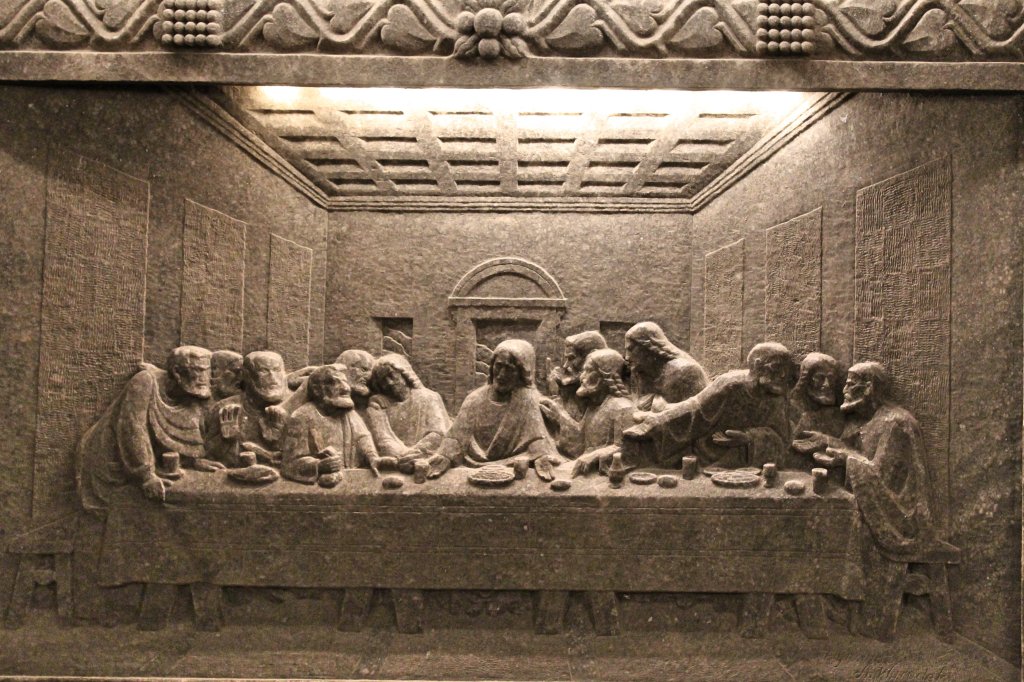
Yet the reason that Wieliczka became so popular is not because tunnels and salt are so fascinating. It is, simply, a beautiful place. Over the years, talented miners have carved works of art into the walls—humorous statues, religious figures, historical personages. There are four entire chapels, one of them as impressive as a cathedral, complete with a chandelier adorned with salt crystals. Another highlight is an underground lake, eerily blue in the artificial light of the cavern, whose water is so saturated with salt that it is probably quite toxic. And then there are the massive scaffolds that seem to go endlessly on into the bowels of the earth.
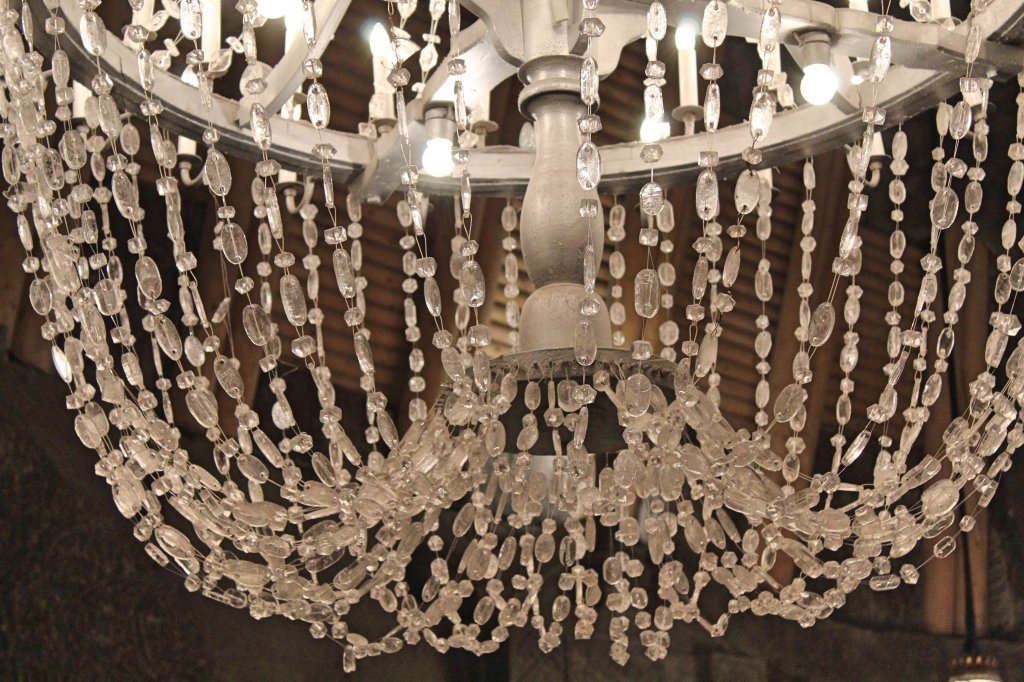
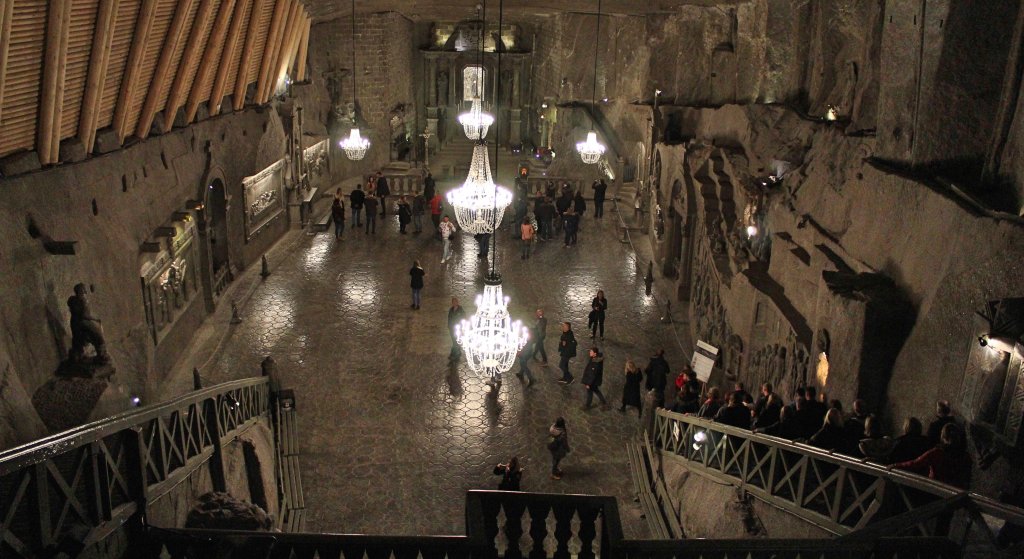
This fairly well wraps up my trip to Poland. But I would be remiss if I ended this post without mentioning the food. Though most people do not think of Eastern Europe as a garden of culinary delights, I must say that every single thing I ate in Krakow was scrumptious. The pierogies, the soups, the fried pork cutlets, the potato pancakes, and, yes, even the cabbage—it was all terrific. (I would like to single out the restaurant Domowe Przysmaki for special praise.) One night, my brother and I walked out of the center of town to visit a food cart selling nothing but grilled kielbasa, and it was worth the cold and the long line. The fresh ingredients and bright flavors of Mediterranean cuisine get all of the attention, but if you ask me the salty, vinegary, smoky flavors of Poland are just as satisfying.
Considering everything I mentioned in this post, along with the opportunity to visit Auschwitz (detailed in another post), I would say that this is one of the most interesting and rewarding corners of Europe for the traveler.



